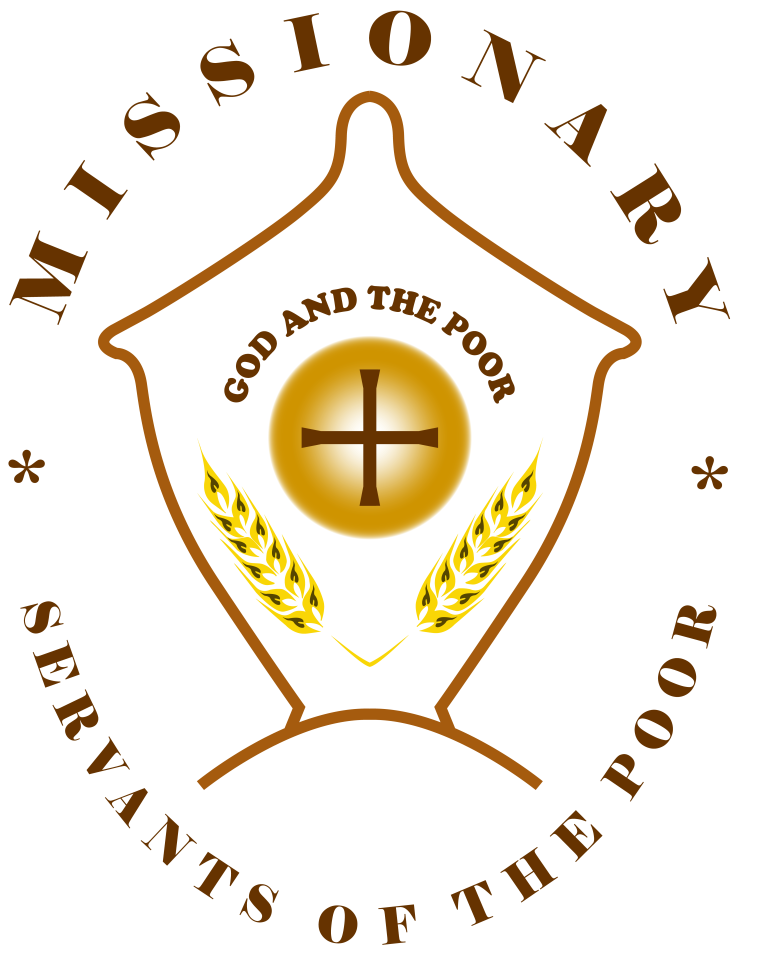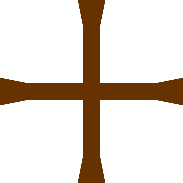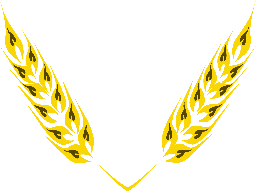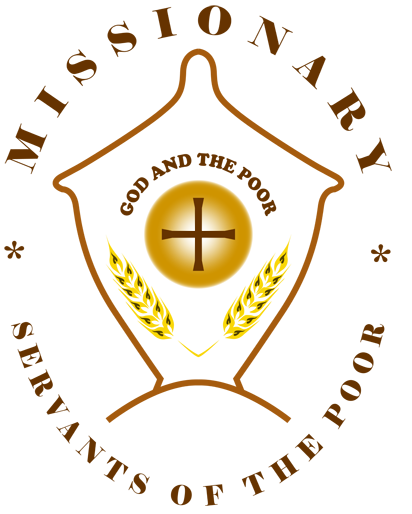Our logo

The logo of the Missionary Servants of the Poor is composed of numerous elements that have a precise meaning.
The stylized figure of Our Lady of Mercy, the globe, the cross, the ears and the motto express the charism of our institute.Pass over the figures below and discover the meaning of the elements that make up our logo.

The drawing intends to represent Our Lady of Mercy opening her arms in a gesture of love and protection towards our Congregation. Father James introduces us to Mary as "the Great Mother of God, our first Superior and our Mother, who defends us from the snares of hell..." (LeA I/1, p. 235) and recommends that we go to Her school "to learn the perfect imitation of Jesus our life" (LeA II, p. 563).
At the center is the world: as Christians and even more so as Bocconist missionaries, we are called to proclaim the Good News of Jesus Christ to the poorest: "Let us run to where misery presents itself most needfully, spying on all the ills of the human race so that no one may be left without comfort" (PeC p. 9), "propagating the faith through charity" (Filippello II/1, p. 257).

The Work of the Morsel of the Poor has its roots in the Eucharist: "This mysterious name, under which a work for the benefit of the unfortunate was born, came from the idea of the Holy Eucharist, the Sacrament of the Divine Love. This mysterious name, under which a work for the benefit of the unfortunate was born, came from the idea of the Holy Eucharist, the Sacrament of divine love by which Jesus Christ, making himself the bread of eternal life and communicating himself in the fraction of it to sinners who are in the true sense the poor because they are deprived of eternal goods, comes to seek them out, feeding them of every strange and harmful appetite and nourishing them with the true nourishment that gives life and eternal life" (Filippello II/2, p. 226).

The cross is the sign of the passion and death of our Lord Jesus Christ and of His love for humanity. The Founding Father called "fortunate are the souls who live in the shadow of the cross!" (LeA I/1, p. 543) and repeated, "The cross leads to Heaven" (Ibid., p.111). The Greek cross, symbol of the four cardinal points, reminds us of the universality of the mission to live and bear witness to the Gospel through the option for the poor and the marginalized.

The ears of wheat are a call to unity and communion in diversity: only if each grain of wheat is delivered into the hands of the Baker can it become food for others. Father James wished to establish a community of people who love one another and who nurture love for the poorest sacrament of Jesus Christ: "Oh! How sweet and sweet will it be to live in community, when, by the spirit of true observance, each person who makes up the community will be a member of that unity which forms the mystical body of Jesus Christ!" (LeA I/1, p. 602).

"Happy will be that day when the hook of the 'morsel' will be able to take together the heart of the rich man and the heart of the Poor Man, when it will be able to unite all hearts in one, when it will be able to say that all in unity of love we form one heart, one soul!" (Filippello II/1, p. 64), always keeping his gaze fixed on God and on the Poor.

"The title of S.d.P. is not a vacuous expression...it is a title that makes known our mission to serve the poor and sorrowful Jesus in the person of the Poor; and we must respond to the meaning of the word, serving the poor as the very person of Jesus Christ" (Filippello II/2, pp. 215-216).


